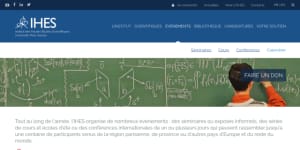From the tissue organization field theory of carcinogenesis to a theory of organisms.

In 1999, C Sonnenschein and AM Soto proposed the tissue organization field theory (TOFT). The TOFT posits 1) that cancer is a tissue-based disease whereby carcinogens (directly) and germ-line mutations (indirectly) alter normal interactions between the stroma and adjacent epithelium; and 2) the default state of all cells is proliferation with variation and motility. This later premise is relevant to and compatible with evolutionary theory, and is diametrically opposed to that of the somatic mutation theory.
This theoretical change is incompatible with the reductionist genocentric perspective generated by the molecular biology revolution. Rather than forcing a “bricolage” we decided to frontally attack the problem by joining efforts with philosophers, mathematicians and theoretical biologists to search for principles upon which to build a theory of organisms (this work is currently supported by the Pascal Chair).
While the theory of evolution has provided an increasingly adequate explanation of phylogeny, biology still lacks a theory of organisms that would encompass ontogeny and life cycles, and thus phenomena on a conception to death time-scale.
To achieve this goal we propose that theoretical extensions of physics are required in order to grasp the living state of matter. Such extensions will help to describe the proper biological observables, i.e. the phenotypes. Biological entities must also follow the underlying principles used to understand inert matter. However, these physical laws and principles may not suffice to make the biological dynamics intelligible at the phenotypic level. By analogy with classical mechanics, where the principle of inertiais the default state of inert matter, we are proposing two aspects of the default state in biology, and a framing principle, namely: i) Default state: cell proliferation with variation as a constitutive property of the living. Variation is generated in particular by the mere fact that cell division generates two overall similar, but not identical cells. ii) Default state: motility, which encompasses cell and organismic movements as well as movement within cells. iii) Framing principle: life phenomena exhibit never identical iterations of a morphogenetic process. Organisms are the consequence of the inherent variability generated by proliferation, motility and auto-organization which operate within the framing principle. From these basic premises, we will elaborate on the generation of robustness, the structure of theoretical determination, and the identification of biological proper observables.